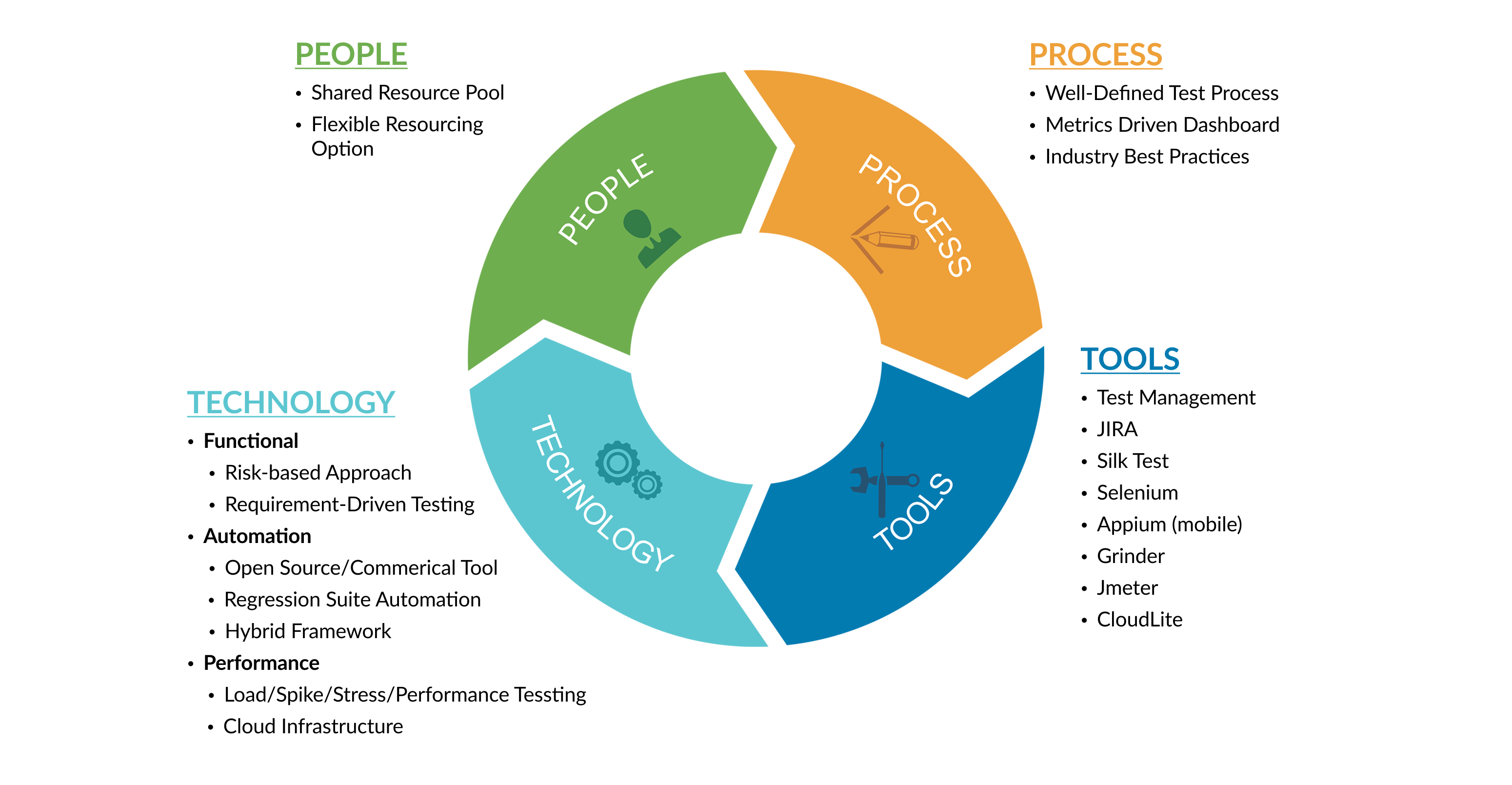A As focus on Quality rises, so does the need to perform testing in an automated and cost-efficient way.
Centralized Testing Command Center
Our TCoE lets you to manage all your resources more efficiently to ensure quality across applications and build a working culture that better focuses on quality and collaboration. We integrate it with HPE Application Lifecycle Management (ALM) technology to provide a comprehensive software environment that shares assets and provides full traceability.
A Testing Center of Excellence (TCoE) brings you the following Benefits

Our Approach
Step 1: Set the Proper Foundation
First, understand how currently your organization is ensuring the quality of systems and business processes. When and how are enterprise applications being tested and how are end-to-end business processes being validated when new technology is deployed?
Step 2: Start with a Project
You want to prove a new approach before making a large scale investment, and the best way to do that is to identify a project with which to demonstrate the value of end-to-end business process validation. Today͛s automation solutions enable companies to get value early and often. In our experience, those first successes pave the way and drive demand for more.
Step 3: Build a TCOE Program
Establish automated business process validation as a competency. To achieve business value and innovation, the TCOE must be managed the way any business asset is: as an integrated set of repeatable activities focused on producing a positive business outcome. Building a TCOE entails adopting an approach and a technology across an organization, but it͛s more than skill alone. It includes people, processes, and technology..
Step 4: Adopt Across the Organization
The single most important aspect to the success of a TCOE is strong executive sponsorship and an executive champion. As well, move the TCOE forward by effecting change and quantifying the value one project at a time—and continue to demonstrate its successes and value through key projects, strong communications and measurable results. Keep working on the improvements so as to generate better ROI and establish an atmosphere of quality across the board.
Case Study
Phase 1 – Test Automation (Toolset Implementation)
Phase 1 was used as a ͚proof of concept͛ and a key initial deliverable was the automated testing of one end-to-end business process to demonstrate a working example to the Client team, who were already using HP Quality Center. The Cignus team installed the additional validated in-scope toolsets onto Client, identified hardware and aligned the existing toolsets to the newly installed tools in readiness for automation to commence.
Client produced an initial list of 25-30 business processes. Working with Cignus, the project team went on to analyze business priority/criticality and coverage, identifying 15 of these processes for automated test scripts creation in the next phase of work, but the project scope cut the final business process count delivered to 11.
Finally, for this element of the work, the Cignus team created a Toolset Administration Guide, defining and documenting the automation process to be created and best practice operation
Phase 2 – Acceleration Plan
The Cignus team went on to build and execute automated scripts for the 11 identified SAP end-to-end business processes, including execution metrics. Cignus then demonstrated the automated test script operation to Client's wider IT community. The presentation was well received and clearly demonstrated the potential time savings
Following completion of the 11 end-to-end test scenarios, we ran a weeklong test automation script-writing training course. Within 5 weeks, the Client team completed 5 more end-to-end automated test scripts, and Cignus provided knowledge transfer to ensure the Client team would be self-sufficient upon completion.
Key Benefits
The Client team͛s increased productivity will allow SAP release cycles to go live up to 2 weeks earlier as well as significantly reducing regression testing efforts. As a result, the Client's IT team being able to provide 1 additional SAP release per year.
The automated regression pack created during the Cignus engagement enables defects to be identified sooner, as well as freeing up the Client's business users to focus on the new functionality being delivered.
